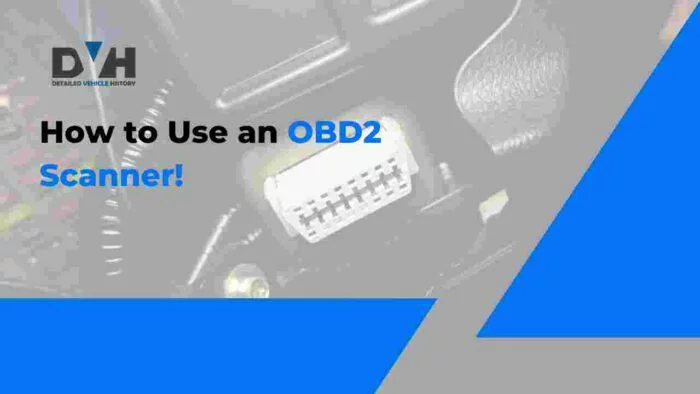Do you want to know what’s going on under the hood of your car? This is where the OBD2 scanner comes in. This tool hooks up with your vehicle’s computer system and provides important information about your car’s health.
Whether your check engine light has just lit up or any maintenance-required light is on, learning how to use an OBD2 scanner can help you see your car’s issues in real time and get OBD fault codes, car performance, sensor data, and more.
In this article, we’ll walk you through the basics of using an OBD2 scanner and its importance.
RELATED: Can I Drive my Mercedes with a “Check Engine” Light On?
What does an OBD2 scanner do?
An OBD-II (On-Board Diagnostic II) scanner is a device that communicates with your car’s onboard diagnostic systems, observes engine performance and emissions, and much more.
If your car’s computer identifies any problem, it logs a fault code. An OBD-II scanner pulls these codes from the vehicle and translates the code to help you understand what might be wrong with it. This could save you hours of time and money at the mechanic.
The second generation OBD2 system became compulsory and implemented for all cars sold in the U.S. in 1996. This means that almost all vehicles from this year onwards can be diagnosed by an OBD2 scanner.
With such a device, you can diagnose problems in the engine, transmission, fuel system, or even the airbag system. Knowing such information helps you make informed decisions regarding repairs or potential purchases.
Types of OBD2 Scanners
There are several types of OBD2 scanners available in the market. They start from basic to advanced.
- Basic scanners: These read the fault codes and give a short description of them. They are rather cheap and work perfectly for novices. These types of models are normally handheld, easy to handle, and usually come with a display screen.
- The advanced models: Unlike the basic scanners, these have more features incorporated. They can give live data, reset codes, and even perform advanced diagnostics, such as emission tests. Some can even show real-time data of your car’s performance, like RPM, vehicle speed, and fuel trim.
- The Bluetooth OBD2 scanners: They connect with your smartphone or tablet. These scanners take help from apps to provide information. They are portable and have easy handling, and you can store data on your smartphone. You can analyze data for a period of time using an app and see what happens with your vehicle’s performance.
Whichever you opt for, an OBD2 scanner will efficiently help you in diagnosing problems.
How to Read OBD2 Fault Codes
Reading fault codes using an OBD2 scanner is simple. Follow the steps below.
- Connect the Scanner
First, find the OBD2 port in your car. This is usually beneath your dashboard near your driver’s seat, but it can also be hidden behind covers. Connect your scanner to this port and make sure it connects well.
- Turn on the Ignition
Plug this scanner into your vehicle, turning the key to the “On” position. This will power on the scanner and communicate with the car’s computer.
- Select Your Vehicle
Choose the make and model of your vehicle on the scanner. Most automatically detect the car model; others require you to manually enter it. If your scanner has model selection, follow any on-screen instructions.
- Scan for Fault Codes
Now you are ready to scan. Hit the “Scan” button on your scanner to connect the device and get the fault codes. When it’s done, it’ll flash them on the screen.
- Analyze Displayed Fault Codes
This will list various fault codes on the scanner. The list will contain combinations of letters and numbers; for example, P0301 means cylinder one misfire. You can look for these codes in the instruction manual or online and know precisely what it really means. Knowing what these error codes mean helps in trying to point out the issue.
RELATED: 7 Reasons Why ABS and Traction Control Lights Are On
Common Fault Codes Explanation
The following are some common fault codes you will find when using an OBD2 scanner. A few examples include:
- P0171 indicates a lean fuel mixture in the engine, meaning it would receive less than the normal amount of fuel. The possible causes for this would be a leakage in the vacuum or a defective fuel pump.
- P0420 means the catalytic converter is malfunctioning. It could also be a sign that the converter is failing or that there is a problem with the oxygen sensors.
- P0455 indicates a major leak in the evaporative emission control system. It could be as minor as a loose gas cap.
These codes will give you an idea of the right steps to take when trying to address an issue.
How OBD2 Data Helps When Buying Used Cars
Knowing how to use an OBD2 scanner can save a lot of money when buying a used car. It aids in the detection of hidden problems that the seller might not disclose.
- First, scan the vehicle to see if there are any fault codes. If the seller says that everything’s perfect and in great shape, well, those fault codes raise a flag. For example, if you see some codes about the engine or transmission, that might be bad news. Several codes may indicate something more serious is going on that may require attention.
- You can also use the advanced OBD2 scanners’ live data feature. This will show you real-time information regarding your engine RPM, coolant temperature, and fuel trim levels. This allows you to make better estimates regarding the condition of the car. If the readings appear wrong, then that could indicate backing out of the sale.
- Coupled with the scanner, you should also run a VIN check to get the vehicle history report. This gives you critical information about the car’s history. You can find out if the car was in any accidents, the current title status, actual mileage, maintenance records, and more.
OBD2 data combined with a vehicle history report creates a better picture of your purchase, helping you make a confident buying decision.
Common Mistakes to Avoid When Using an OBD2 Scanner
Even with an OBD2 scanner, it is easy to make mistakes. A few to watch out for include:
- Don’t ignore pending codes: There are some things that can go wrong in your car that don’t trip the check engine light yet but will turn on a code in memory.
- Do not clear codes without attending to the issue. Once the codes are cleared while the fault is present, the check engine light will be back again, which could further damage your car.
- Do not depend on the scanner for diagnosis. While OBD2 scanners are a great way to gain insight, they don’t fully understand the context of the fault or the repair history of the car. They are best used in conjunction with other diagnostic methodologies and visual inspections.
Conclusion
The OBD2 scanner is one of the easiest tools for monitoring your car’s health. It literally powers you up with knowledge about any problems that may pop up with your vehicle. Whether you are an experienced driver, car owner, or a newbie, the OBD2 scanner could save you thousands of dollars and headaches down the line.
When purchasing a used car, you should always check the history. A vehicle history report will save you from making an uninvested decision. If you have both the OBD2 scanner and a vehicle history report in possession, you will surely drive away confidently, knowing that you have made an informed decision.










